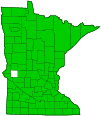common yarrow
(Achillea millefolium)
Conservation • Wetland • Description • Habitat • Ecology • Use • Distribution • Taxonomy
Description |
||
Common yarrow is a 8″ to 32″ tall, erect, perennial forb that rises on usually a single stem, sometimes 2 to 4 stems, usually from rhizomes and fibrous roots. It often forms colonies. The stem is erect, unbranched below the inflorescence, green, and sparsely to densely covered with long, tangled, white, woolly hairs. It does not have short branches in the leaf axils. Basal leaves are fern-like and form a rosette. They are narrowly oblong to lance-shaped or inversely lance-shaped in outline, up to 13¾″ long, and up to 1⅜″ wide. The division on the compound leaves is variable, as is the orientation of the leaflets. The leaf blades are deeply divided into leaflets (pinnate), which may be again pinnately divided (bipinnate). The ultimate leaflets are lobed (pinnatifid), and the lobes may be again lobed (bipinnatifid). The ultimate lobes are linear to thread-like, 1 ⁄16″ to ⅛″ long, sometimes up to 3 ⁄16″ long, and sharply pointed at the tip. The overall appearance of the blade may be flat, the leaflets and lobes arrayed like a feather, or 3-dimensional, the leaflets and lobes arrayed like a bottle brush. The upper surface is green or grayish-green and hairless or sparsely to moderately covered with woolly hairs. The lower surface is similar in color and moderately to densely covered with woolly hairs. Stem leaves are alternate, 1⅜″ to 4¾″ long, 3 ⁄16″ to 1⅜″ wide, and otherwise similar to basal leaves. The leaves become gradually smaller as they ascend the stem. Only the lowermost stem leaves are stalked. When crushed, the stem and leaves emit an unpleasant odor. The inflorescence is flat-topped or dome-shaped, compound, coyrmb-like, branched cluster (panicle) of 10 to 100 or more flower heads at the end of the stem. The whorl of bracts at the base of the flower head (involucre) is ⅛″ to 3 ⁄16″long and narrowly cup-shaped to nearly cylinder-shaped. It is composed of 20 to 30 modified leaves (phyllaries) in more or less 3 overlapping series. The phyllaries are green and egg-shaped to lance-shaped. The outer phyllaries are shorter than the inner ones. They have dark green to yellowish midribs and are densely covered with woolly hairs. The margins may be green, light brown, or dark brown. The flower heads are ⅛″ to 3 ⁄16″in diameter. They usually have 5 ray florets but may have as few as 3 or as many as 8, and they have 10 to 20 disk florets. The ray florets are white, rarely pink. The expanded portion of the ray floret is 1 ⁄16″ to ⅛″ long and wide. The disk florets are white to grayish-white. The fruit is a dry, one-seeded, 1 ⁄32″ to 1 ⁄16″ long seed capsule (cypsela). There is no tuft of hairs attached to the end. |
||
Height |
||
8″ to 32″ |
||
Flower Color |
||
White |
||
Similar Species |
||
|
||
Habitat |
||
Moderate moisture to wet. Prairies, forest openings, fields, roadsides, disturbed sites. Full sun. |
||
Ecology |
||
Flowering |
||
July to October |
||
Pests and Diseases |
||
|
||
Use |
||
|
||
Distribution |
||||
|
Sources |
|||
| 4/3/2023 | ||||
Nativity |
||||
Native |
||||
Occurrence |
||||
Very common and widespread |
||||
Taxonomy |
|||
| Kingdom | Plantae (Plants) | ||
| Division | Tracheophyta (Vascular Plants) | ||
| Subdivision | Spermatophytina (Seed Plants) | ||
| Class | Magnoliopsida (Dicots) | ||
Order |
Asterales (Sunflowers, Bellflowers, Fanflowers, and Allies) | ||
Family |
Asteraceae (Sunflowers, Daisies, Asters, and Allies) | ||
| Subfamily | Asteroideae | ||
| Supertribe | Asterodae | ||
| Tribe | Anthemideae (chamomiles, yarrows, and allies) | ||
| Subtribe | Matricariinae | ||
Genus |
Achillea (yarrows) | ||
Subordinate Taxa |
|||
Up to eight subspecies, sixteen varieties, and seven forms of Achillea millefolium are currently recognized by some sources, based on differences in density and persistence of hairs, color of phyllary margins, leaf dissection and the shape of lobes, and the shape of the inflorescence. Other sources treat Achillea millefolium as a single, variable species. |
|||
Synonyms |
|||
Achillea alpicola Achillea angustissima Achillea arenicola Achillea aspleniifolia Achillea borealis Achillea borealis ssp. arenicola Achillea borealis ssp. californica Achillea borealis ssp. typica Achillea borealis var. arenicola Achillea borealis var. californica Achillea californica Achillea eradiata Achillea fusca Achillea gigantea Achillea gracilis Achillea lanulosa Achillea lanulosa ssp. alpicola Achillea lanulosa ssp. megacephala Achillea lanulosa ssp. typica Achillea lanulosa var. alpicola Achillea lanulosa var. arachnoidea Achillea lanulosa var. eradiata Achillea laxiflora Achillea magna Achillea megacephala Achillea millefolium ssp. atrotegula Achillea millefolium ssp. borealis Achillea millefolium ssp. lanulosa Achillea millefolium ssp. occidentalis Achillea millefolium ssp. pallidotegula Achillea millefolium var. alpicola Achillea millefolium var. arenicola Achillea millefolium var. aspleniifolia Achillea millefolium var. borealis Achillea millefolium var. californica Achillea millefolium var. fulva Achillea millefolium var. fusca Achillea millefolium var. gigantea Achillea millefolium var. gracilis Achillea millefolium var. lanulosa Achillea millefolium var. litoralis Achillea millefolium var. maritima Achillea millefolium var. megacephala Achillea millefolium var. millefolium Achillea millefolium var. nigrescens Achillea millefolium var. occidentalis Achillea millefolium var. pacifica Achillea millefolium var. parviligula Achillea millefolium var. parvula Achillea millefolium var. puberula Achillea millefolium var. rosea Achillea millefolium var. russeolata Achillea nigrescens Achillea occidentalis Achillea pacifica Achillea puberula Achillea rosea Achillea subalpina Achillea tomentosa |
|||
Common Names |
|||
bloodwort carpenter’s weed common yarrow devil’s nettle milenrama milfoil nose bleed old-man’s-pepper sanguinary soldier’s woundwort stenchgrass thousandleaf western yarrow woolly yarrow yarrow |
|||
Glossary
Axil
The upper angle where a branch, stem, leaf stalk, or vein diverges.
Bipinnate
Twice pinnate. Divided into leaflets that are further pinnately divided.
Bipinnatifid
Twice pinnatifid. Cut deeply into lobes with each lobe also cut into deep lobes.
Compound leaf
A leaf that is divided into leaflets, each leaflet having the general appearance of a leaf, with all leaflets attached to a single leaf stem.
Corymb
A flat-topped or convex inflorescence in which the stalked flowers grow upward from various points on the main stem to approximately the same horizontal plane. The outer flowers open first.
Involucre
A whorl of bracts beneath or surrounding a flower, flower head, or flower cluster.
Linear
Long, straight, and narrow, with more or less parallel sides, like a blade of grass.
Panicle
A pyramidal inflorescence with a main stem and branches. Flowers on the lower, longer branches mature earlier than those on the shorter, upper ones.
Phyllary
An individual bract within the involucre of a plant in the Asteraceae family.
Pinnate
On a compound leaf, having the leaflets arranged on opposite sides of a common stalk. On a bryophyte, having branches evenly arranged on opposite sides of a stem.
Pinnatifid
Deeply cut, more than half way to the midrib but not to the midrib, into lobes that are spaced out along the midrib; the lobes do not form separate leaflets.
Rhizome
A horizontal, usually underground stem. It serves as a reproductive structure, producing roots below and shoots above at the nodes.
Visitor Photos |
|||||
Share your photo of this plant. |
|||||
| This button not working for you? Simply email us at info@MinnesotaSeasons.com. Attach one or more photos and, if you like, a caption. |
|||||
Robert Briggs |
|||||
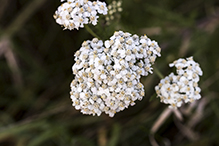 |
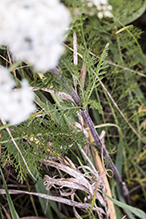 |
||||
MinnesotaSeasons.com Photos |
|||||
Colony |
|||||
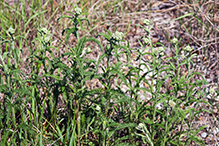 |
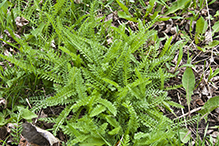 |
||||
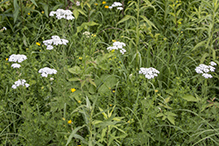 |
|||||
Plant |
|||||
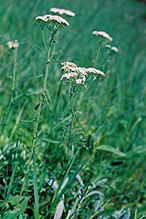 |
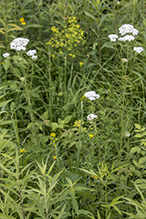 |
||||
Inflorescence |
|||||
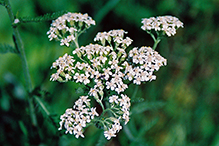 |
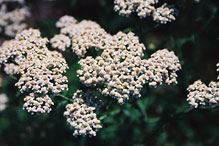 |
||||
Flowers |
|||||
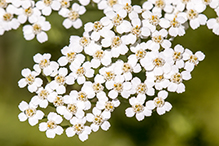 |
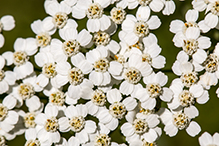 |
||||
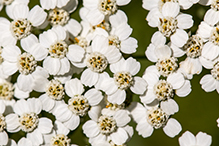 |
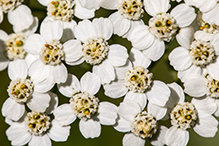 |
||||
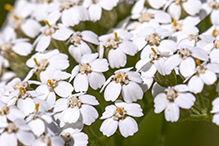 |
|||||
Leaves |
|||||
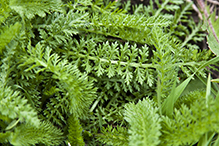 |
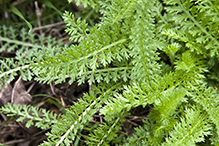 |
||||

Slideshows |
||
| Achillea millefolium Matt Lavin |
||

|
||
| Yarrow (Achillea millefolium) Andree Reno Sanborn |
||

|
||
| Achillea millefolium YARROW Frank Mayfield |
||

|
||
| Achillea millefolium lacoma23 |
||
About
Published on May 18, 2012 Plants of future (http://www.pfaf.org/user/Plant.aspx?LatinName=Achillea+millefolium) GRIN - Taxonomic information (http://www.ars-grin.gov/cgi-bin/npgs/html/taxon.pl?1270) |
||

Visitor Videos |
|||
Share your video of this plant. |
|||
| This button not working for you? Simply email us at info@MinnesotaSeasons.com. Attach a video, a YouTube link, or a cloud storage link. |
|||
Other Videos |
|||
| Yarrow (Achillea millefolium) Wandering Sole TV |
|||
About
Published on Jul 15, 2013 Yarrow (Achillea millefolium) is a flowering plant in the Sunflower (Asteraceae) family. It grows in temperate regions throughout North America and the Northern Hemisphere. It is a very useful herb and throughout history various parts of the plant have been used to treat rheumatism, sore throats, toothaches, wounds and abrasions, high blood pressure, nosebleeds, colds, fevers, the flu, and variety of other ailments. It also has been used used as an anti-inflammatory, diaphoretic, astringent, tonic, and stimulant. It contains the alkaloid achilleine, which can be used to suppress menstruation. The Secwepemc peoples put the leaves on fires to keep mosquitos away. Despite all its uses, yarrow can cause severe allergic skin rashes and prolonged use can increase the skin's photosensitivity. Other names for common yarrow include gordaldo, nosebleed plant, old man's pepper, devil's nettle, sanguinary, milfoil, soldier's woundwort, thousand-leaf, and thousand-seal. |
|||
| Common Yarrow (Achillea Millefolium) - 2013-07-13 W3stlander |
|||
About
Published on Aug 2, 2013 Achillea millefolium (yarrow or common yarrow) is a flowering plant in the family Asteraceae. ----------- |
|||
| Common Yarrow (Achillea Millefolium) - 2012-09-02 W3stlander |
|||
About
Published on Sep 5, 2012 Achillea millefolium (yarrow or common yarrow) is a flowering plant in the family Asteraceae. ----------- |
|||
| Achillea millefolium wetvideocamera |
|||
About
Published on Sep 29, 2013 Yarrow - a weedlike plant often found growing in wastelands and roadsides. It has many leaves and clusters of white or pink flowers. Many medicinal values in this plant were utilized by First Nations groups in the Pacific Northwest. |
|||

Visitor Sightings |
|||||
Report a sighting of this plant. |
|||||
| This button not working for you? Simply email us at info@MinnesotaSeasons.com. Be sure to include a location. |
|||||
| Robert Briggs 11/7/2016 |
Location: Whitetail Woods Regional Park |
 |
|||
MinnesotaSeasons.com Sightings |
|||||
Avon Hills Forest SNA, North Unit Badoura Jack Pine Woodland SNA Bertram Chain of L akes Regional Park Blazing Star Prairie Addition Preserve, South Unit Carpenter St. Croix Valley Nature Center Carver Highlands WMA, South Unit Clifton E. French Regional Park Felton Prairie SNA, Bicentennial Unit Itasca Wilderness Sanctuary SNA John Peter Hoffman Spring Brook Valley WMA Lake Alexander Woods SNA, South Unit Margherita Preserve-Audubon Prairie Minnesota Valley NWR, Long Meadow Lake Unit Minnesota Valley NWR, Louisville Swamp Unit Minnesota Valley NWR, Rapids Lake Unit Mound Spring Prairie SNA, North Unit Mound Spring Prairie SNA, South Unit Nerstrand Big Woods State Park Northern Tallgrass Prairie NWR, Hoffman Unit Northern Tallgrass Prairie NWR, Pavia Unit Northern Tallgrass Prairie NWR, Rengstorf Unit Northern Tallgrass Prairie NWR, Touch the Sky Prairie Unit P.N. and G.M. Nelson Wildlife Sanctuary Pankratz Memorial Prairie, North Unit Pembina Trail Preserve SNA, Crookston Prairie Unit Prairie Creek WMA, Koester Prairie Unit Sand Prairie Wildlife Management and Environmental Education Area Spring Beauty Northern Hardwoods SNA Two Rivers Aspen Prairie Parkland SNA |
|||||

|
Created: Last Updated: © MinnesotaSeasons.com. All rights reserved. |
